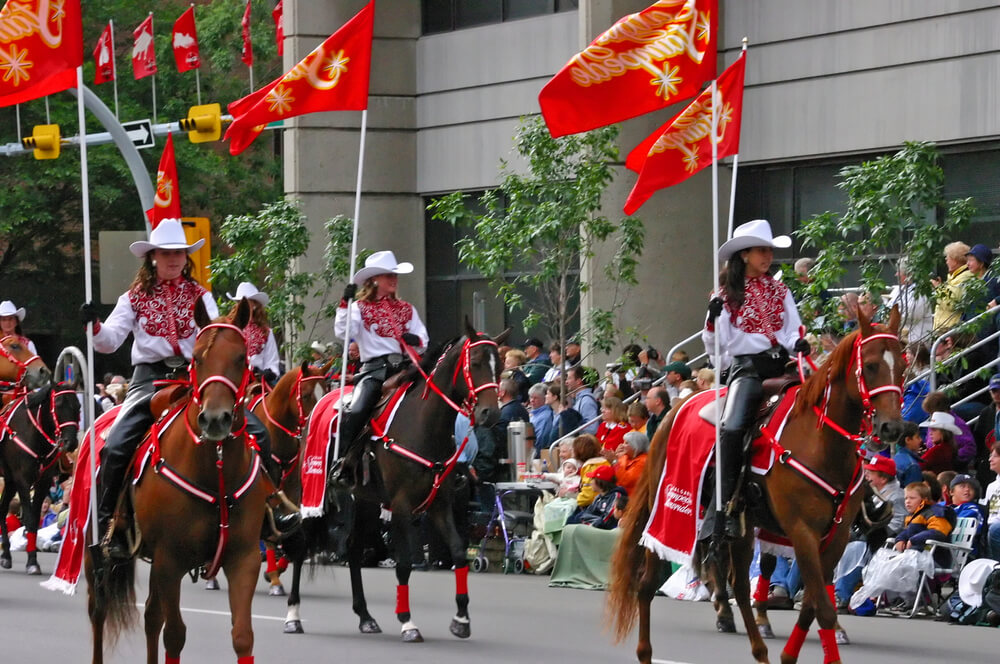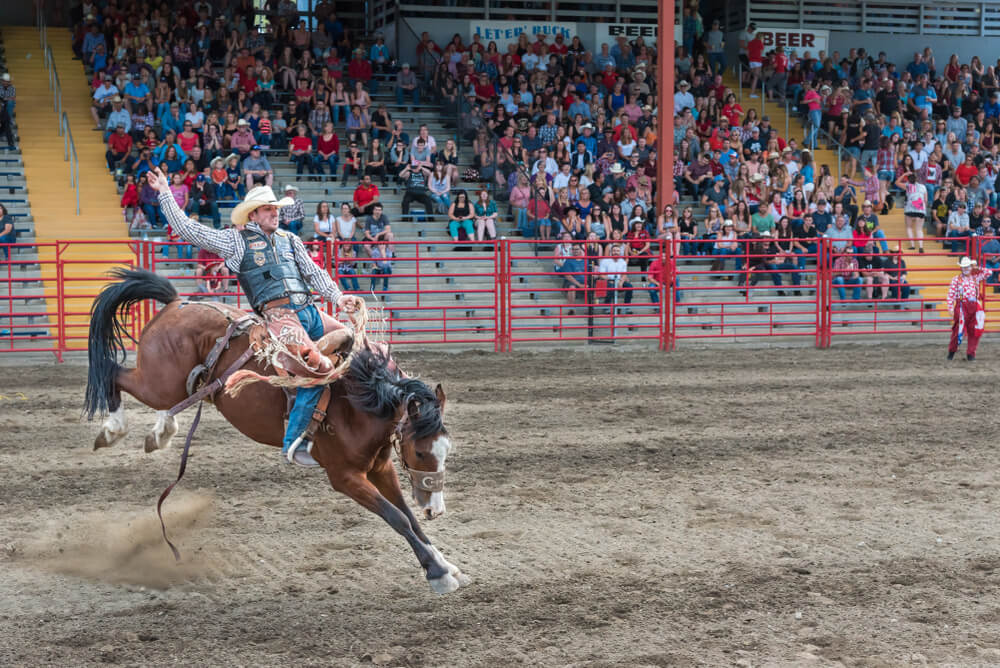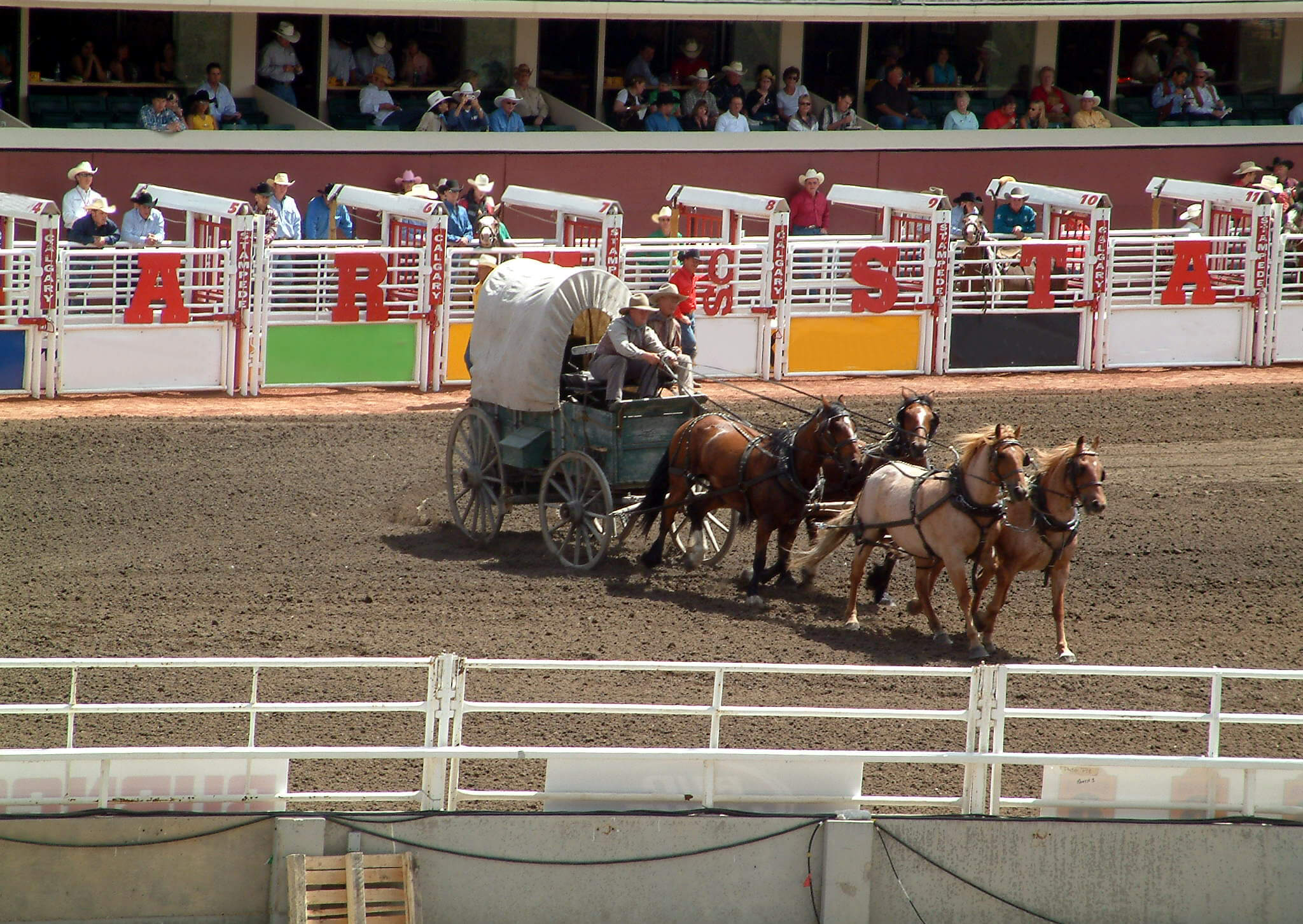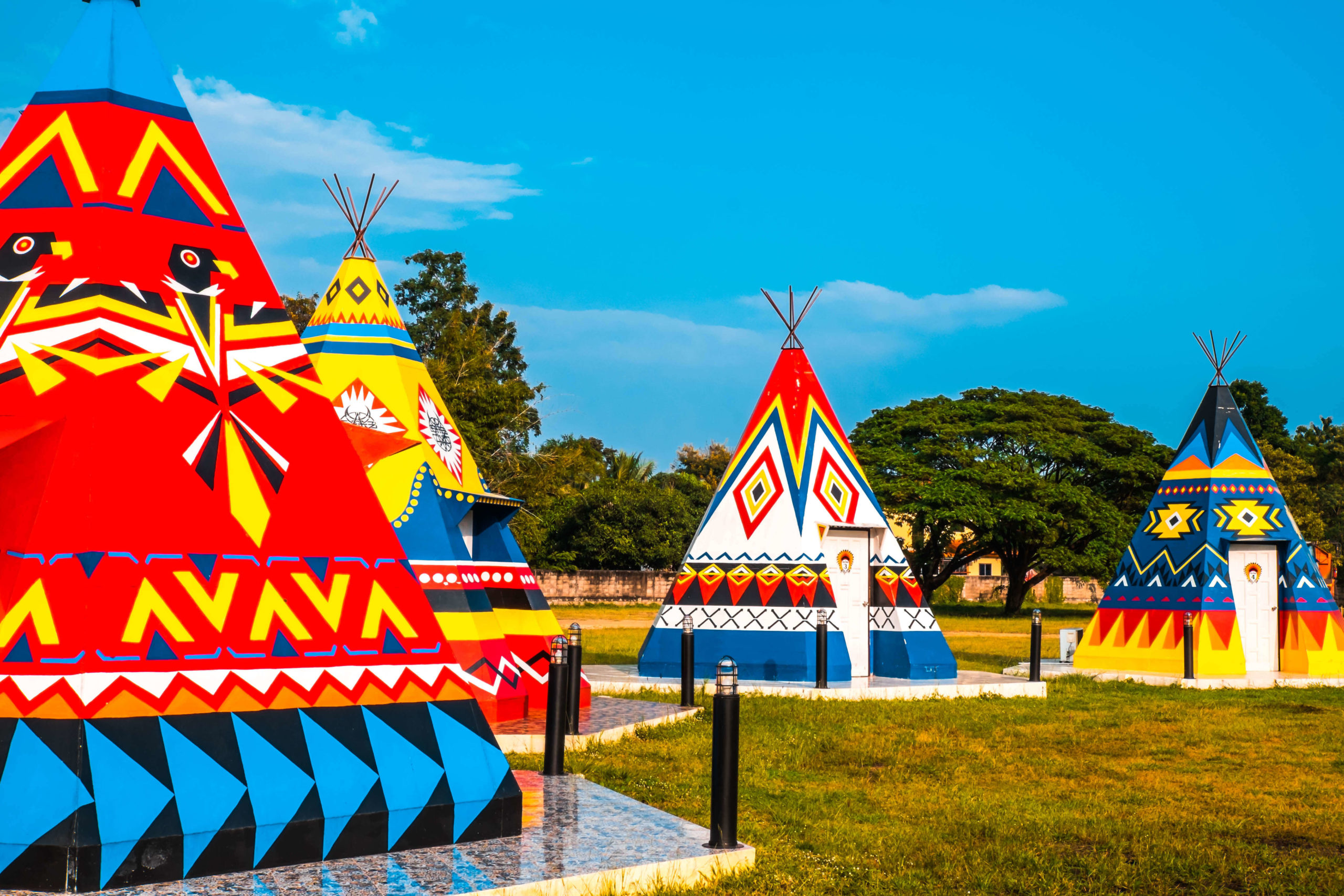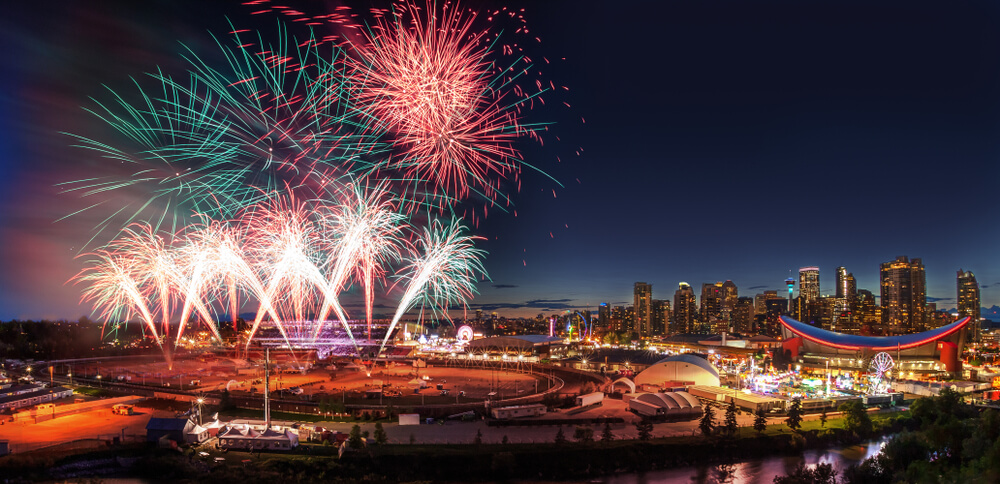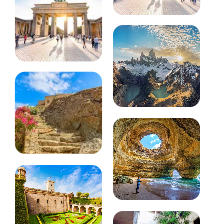The Calgary Stampede
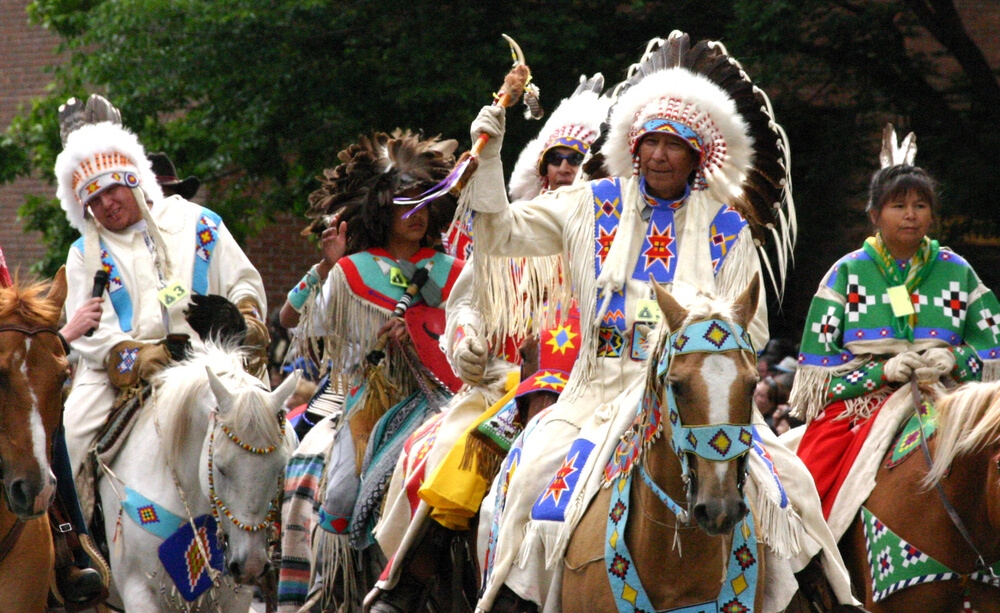
Have you heard of the Calgary Stampede?
If you’ve ever been to Western Canada, you’ll no doubt know that Calgary, the largest city in the province of Alberta, has a strong agricultural tradition and represents the idea of the Canadian Wild West. It’s not for nothing that it’s known as ‘Cowtown’.
If you’ve seen the wonderful film ‘Brockeback Mountain’, you should know that a large part of it was shot in the Rocky Mountains around Calgary.
So much for the setting and the cowboys.
A little history
The Calgary region has almost always been inhabited. There has been a human presence here for over 10,000 years. Many First Nations peoples have lived here: the Niitsitapi, the Tsuutʼina, and the Metis.
In 1787 a young 17-year-old cartographer, David Thompson, arrived. He was the first European (of whom there is a written record) to visit the region.
In 1873 came the first settler, John Glenn. Two years later, three priests settled on the riverbank.
In 1875, the site became a North-West Mounted Police post, responsible for protecting the fur trade. A fortress was built and in 1876 Fort Calgary was established.
In 1877, the First Nations “ceded” the region.
In 1881, the federal government, to encourage immigration to the Canadian prairies (and prevent the USA from laying claim to the land), offered pieces of land for cattle rearing in Alberta.
In 1884, the city of Calgary was founded, along with the Calgary and District Agricultural Society, which organised its first agricultural fair.
The origins of the Stampede
It all began, as it often does, with an inspired man: Guy Weadick.
He visited Calgary in 1908 for the Dominion Exhibition, a large travelling fair designed to promote the different regions of the country.
Calgary pulled out all the stops for its Dominion Exhibition! The city spent CAD 145,000 to build 6 new pavilions and a racecourse. It organised a spectacular parade as well as rodeo competitions, horse races and rope tricks (trick roping, you know the trick with the lassos that are skilfully thrown to catch animals!), as well as airship flights, concerts and so on.
So our friend Guy Weadick was there to see it all, and he thought that Calgary was a perfect example of the balance between modernity and the traditions inherited from the Wild West. He thought it would be fun to create an event celebrating the cowboy profession and the skills of the region.
He surrounded himself with the Big 4, four eminent and wealthy businessmen, who were enthusiastic about the project and financed it.
The first edition was held in the rain, which didn’t help, but the parade attracted around 80,000 spectators, double the population of Calgary at the time.
In 1923, the tradition of free pancake breakfasts in the city centre, shop decorations and horse-drawn chuckwagon races was added.
In 1946, Patsy Rodgers was crowned the first Queen of the Stampede and became its ambassador, inspiring the creation of an annual contest. Today, the Stampede Queen and Princesses take part in over 400 events a year.
The Stampede today
With a few exceptions (between the World Wars and the Covid epidemic), the Stampede has been held every July for over a hundred years.
Between 1912 and 2015, more than 67 million people attended the Stampede (including the UK royal family, who came several times).
The locals get out their best pairs of ankle boots, skinny jeans and fringed jackets and enjoy 10 days of festivities packed with events of all kinds!
The Parade
Kicking off the festivities, the grand parade marches 4.5 km through downtown Calgary.
Cheered on by the crowds, hundreds of marching bands, floats, horsemen, folk dancers, cheerleaders, cowboys and First Nations people, not to mention the Royal Canadian Mounted Police in red serge, march behind the parade marshal. The parade marshal is usually a celebrity, actor, athlete or politician…
The parade starts just before 9.00am on Friday, and attracts a huge crowd! A record 420,000 people attended in 2011, thanks to the presence of Prince William and Kate Middleton, Duke and Duchess of Cambridge.
The Rodeo
The Rodeo is the pulsating heart of the Stampede. It’s what makes it so famous, as if the rest of the events simply revolved around the star of the moment.
We’ve said it before and we’ll say it again: it’s only the biggest rodeo in the world, and the most famous event of its kind in the world!
20,000 fans gather to watch the country’s best cowboys compete in a series of 6 disciplines:
- Bull riding : the main image you have of a rodeo, that of a rider who has to stay as long as possible on a bull, while the animal tries to get rid of its mount.
- Barrel racing (usually for women): when the rider and her mount have to draw a cloverleaf in the arena by passing around 3 barrels placed in a triangle.
- Steer wrestling: an event in which the rider has to fall off his horse onto a young steer, grab it by the horns and make it fall to the ground (a discipline condemned by animal rights groups who denounce its cruelty).
- Lassoing a calf: as the name suggests, this is an ancestral cowboy task involving lassoing a calf.
- Bareback bronc: competitors have to stay on a horse (of a breed known to rear) for at least 8 seconds, without a saddle, reins or halter (the straps that usually encircle a horse’s head), holding on with one hand to a surcingle, a sort of belt fitted with a handle, as in equestrian acrobatics.
- Saddle horse: the idea here is also to stand on a prancing horse, but with a special saddle and a simple braided rein.
The winner of each discipline takes home $100,000.
The Derby
In 1923, Weadick invented wagon racing to add a dose of adrenalin and excitement to the event. Breeders were invited to get into their “chuckwagons”, their covered wagons, and race for the numerous prizes.
The excitement was immediate! The Rangeland Derby, nicknamed the “Half-Mile from Hell”, was a success and the first advertisements began to appear on the now-sponsored wagons.
Each racing team consists of a driver and his 4 horses pulling the wagon, supported by two or four riders riding individual thoroughbreds and following the wagon.
The first to cross the finish line is declared the winner. The total prize money over the 10 days exceeds 2 million Canadian dollars!
This sport is controversial, as it has led to the death of horses and drivers over the years.
The agricultural show
When it all began in 1886, Alberta was a rural province. This is no longer the case, but the Agricultural Exhibition remains an important part of the Calgary Stampede.
Visitors come to see a variety of demonstrations, livestock displays and competitions, such as the best blacksmith.
The Midway
The only for-profit part of the event, the Midway is both an integral part of the Stampede and completely separate from the main theme. It’s a giant amusement park that opens for the duration of the festival, with traditional rides as well as stages for concerts.
The Pancake Breakfast
Offering pancakes for breakfast has become an institution at the Stampede!
It all began in 1923, when one of the wagon drivers, Jack Morton, invited people passing by to share his breakfast.
That was all it took to start a great tradition of sharing!
Today, the city’s largest breakfast site is at the Chinook Center shopping centre. 400 volunteers are on hand to offer pancakes to over 60,000 people!
The First Nations
At the first exhibition in 1886, the First Nations took part in the festivities. They took part in parades and sporting events, and shared their traditional songs and dances with a lively public. Weadick had every intention of creating a Stampede that would include Aboriginal people. But in 1912, the Department of Indian Affairs, wishing to put an end to the rites and traditions of the First Nations, violently opposed the idea, and almost succeeded in having their participation banned. Weadick, counting on the support of the future Prime Minister, was able to stand up to the Ministry, and hundreds of members of 6 different tribes took part in the 1912 Stampede. They put up their most beautiful tipis, were the most popular in the parade, and Tom Three Persons, of the Blood tribe, was the first Stampede hero, the only Canadian champion, and the first man to succeed in riding Cyclone, the famous indomitable horse.
So all’s well that ends well? Well, no, that would be too simple.
The history of Canada and its First Nations is far more complex. Between 1914 and 1932, the Department of Indian Affairs and Guy Weadick fought a bitter battle, amending the Indian Act to make their presence illegal, restoring their right to participate, and so on.
Despite all these conflicts, the natives around the Calgary area have always been enthusiastic participants, and their ‘Indian village’, where they display crafts and organise pow-wows, has always been a Stampede staple and is still a firm favourite at the festival. The owners of the tipis are descendants of the original participants and, generation after generation, they show their gratitude to the event for helping to preserve and spread their culture.
In 2018, the Indian village was renamed “Elbow River Camp” to reflect, and I quote: “reconciliation and a better understanding of indigenous peoples as modern, strong and resilient”.
In conclusion
The Stampede is Canada’s most profitable festival, ahead of Ottawa’s “Snow Ball”, Toronto’s “Canadian National Exhibition” and Montreal’s “Just for Laughs” festival. The economic impact of the festival is enormous! It is estimated that over 10 days, the province generates more than $220 million!
The Stampede was originally created to promote Calgary’s traditions, but its current impact extends far beyond Canada’s borders!
It’s a not-to-be-missed event if you’re in Western Canada at this time of year.
A show you won’t soon forget, and a change of scenery guaranteed!
200 audioguided tours for cities all around the world
Download